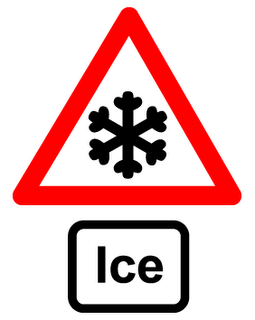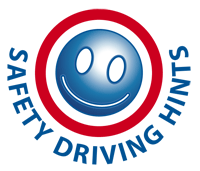 SNOW x WATER = DRIVING HAZARD
SNOW x WATER = DRIVING HAZARD Well the weather experts were correct the snow arrived, the news reports told of big hold ups and drivers finding it hard to make progress.
The local Radio stations received calls asking why such small amounts of snow was causing so much trouble, is a enough done within our driving training programmes, should we see skid control given to all drivers?
But would costs be a major problem, one caller to the radio station said why bother, how often do we get snow, take your chance and if the car skids it skids.
But surely this could be a situation between life and death (wonder how many skid control courses are sold this year as Christmas presents).
The snow looking really lovely just like a Christmas card scene, but what happens when it melts turning into water and laying on roadside in the camber of the road. We never know how deep this can be, there are many potholes which need repair, steering on vehicles can get damaged, tyres cut.
As a driver our ability to stop the vehicle on wet roads is heavily reduced, with these conditions the stopping distance increases by a factor of two or even more.
On a dry road in good conditions we talk of a two second gap between you and the vehicle ahead of you.
So back onto the wet road we must try to compensate this, we must reduce the speed and increase the distance between us and any vehicle in front.
We are also controlled by falling rain, even with the wipers on, our visibility will be reduced, and the windscreen gets misted up
Keep all windows clean.
Use quality windscreen washer fluid.
Clean windows as soon as they start to mist over.
Replace worn wiper blades.
Water from the sky is not the only problem, the water forced up from the road by vehicles driving over it causes a major hazard, in a split second spray hitting the screen thrown up by other vehicles reduces vision
quickly.
To minimise this risk as we said keep a good distance from vehicle in front, if you see a heavy vehicle coming towards you, switch the wipers on to a full speed and be ready for lots of water hitting your windscreen as it passes. Reduce speed at night time when in heavy rain as there will be lots of glare from vehicle lights and the wet road can cause reflection.
The rains causes pools on the road surface and this in turns lead to aquaplaning.
Aquaplaning is when the tyres surf over the pools of water and by doing this they lose contact with the road,
at this point your steering feels very light, so gently release the accelerator this slows the vehicle allowing the tyres to regain traction on the road, while aquaplaning you must avoid braking and trying to steer, as this
can cause you to lose control.
Water on road is not enough to cause aquaplaning but your speed and the depth of the water will, therefore travelling at safe speed according to the conditions will reduce the circumstances for aquaplaning to take place.
Remember going through puddles can cause a drag and you feel a tug at your wheels, this may make you swerve, at the same time a heavy amount of water can lift over your windscreen.
We are seeing more flooded roads nowadays, the terrible scenes in Cumbria last month could take place anywhere, so we must all check depths of water before ever attempting driving through. If deciding to go, make sure its slowly as speeding will cause a wave which can result with water going up into the engine bay and exhaust systems, which nowadays are not cheap to replace.
By using first gear keeping the revs of engine high and slipping the clutch would reduce this, keep to crown of road if possible and not going through same time as on coming traffic.
With the sudden down pours we get now we must be more aware, snow reports say don’t go out on the roads, I’m sure this should also be the warning given in heavy rain falls. Times are changing.









